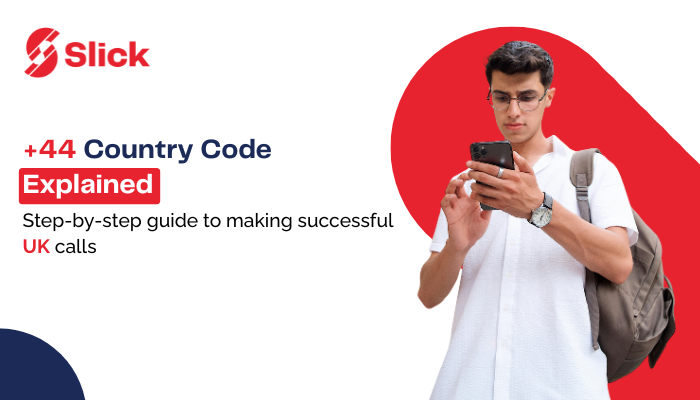Ever hit a brick wall when trying to make an international call? That frustrating “calling restricted” message doesn’t just ruin your day; it cuts you off from people who matter most. Whether you’re trying to wish your mom a happy birthday or finalize a business deal overseas, country-specific calling restrictions can feel like an unnecessary roadblock. So, what’s going on here? Think of it like this: phone carriers and governments sometimes put up invisible fences around certain countries.
Maybe it’s to prevent scam calls, comply with international sanctions, or simply because your current plan doesn’t cover that destination. But here’s what your carrier won’t tell you. There are perfectly legal ways around these restrictions. In this guide, we’ll break down why these restrictions happen and, most importantly, what you can do to get around them. The funny thing is, while carriers make it seem complicated, bypassing these restrictions can be surprisingly simple. Want to know how? Let’s start by understanding exactly what we’re dealing with.
Why Your Calls Get Blocked: Understanding Country-Specific Calling Restrictions
That frustrating moment when your international call fails isn’t random; it’s usually due to country-specific calling restrictions. But why would anyone block your call? Let’s look at what’s going on behind the scenes.
Fraud Protection That Works Too Well
Many phone carriers automatically block or flag calls to certain countries and regions known for high rates of phone scams. While this helps protect customers from fraud, it can also unintentionally block legitimate calls, especially to places frequently associated with scams, such as:
- Jamaica (due to past premium-rate scam concerns)
- Certain African nations
- Parts of Southeast Asia
What you can do: If you need to call these regions regularly, contact your carrier to explain your situation. Some providers may lift restrictions after verifying your account or confirming your identity, though policies vary.
Important notes:
- Not all carriers block calls in the same way. Some may only flag suspicious activity rather than imposing blanket bans.
- Restrictions can change based on fraud trends, so check with your provider for the most up-to-date policies.
- Businesses or individuals with ties to high-risk regions may need to request exceptions in advance.
This system helps reduce scams but can be frustrating for legitimate callers. If you’re affected, your carrier may offer solutions, but be prepared for possible delays or limitations.
The Hidden Cost Controls
Many phone plans, especially prepaid ones, restrict international calls by default. Carriers do this because:
- Some international rates are shockingly expensive
- They want to avoid customer complaints about bill shock
- Certain destinations cost them more to connect to
Pro tip: Always check your plan details. That “unlimited” plan might only cover domestic calls.
When Governments Get Involved
Government regulations or market restrictions often impose the strictest calling limits.
- Sanctioned Countries: In certain heavily restricted nations, international carriers may be legally prohibited from connecting calls due to sanctions. For example, in sanctioned countries like Cuba or North Korea, US carriers legally can’t connect calls.
- Restrictive Telecom Markets: Some governments enforce strict controls on communication services, such as blocking unlicensed VoIP platforms to protect state-approved providers. While these restrictions are easing in some regions, limitations may still apply.
- Political or Diplomatic Barriers: Cross-border calling access can reflect geopolitical tensions. Some countries block connections to specific destinations due to ongoing disputes, though these restrictions may shift over time due to diplomatic changes.
Spotting Different Calling Restriction Types
Ever tried making a call or using WhatsApp only to hit a weird error? Sometimes, the message or signal you get can give you a clue, but it’s not always straightforward. Let’s break it down so you can troubleshoot like a pro.
“Call Restricted” or “Call Blocked” Error
If you see this, your carrier is likely the culprit. For example, this often happens when:
- You haven’t paid your bill.
- Your plan doesn’t include international calls (common with budget carriers).
- The recipient’s carrier blocked you (maybe their number has call barring enabled).
Fast Busy Signal or Dead Silence
Hearing rapid beeps or nothing at all? This is trickier because it could mean a few things:
- Network congestion (try again later).
- Carrier blocking (your number might be flagged).
- Government or country-specific call restrictions (some regions intentionally disrupt calls to certain numbers).
VoIP Apps Like WhatsApp or Skype Won’t Connect
If your usual workaround fails, here’s what’s probably going on:
- Your internet is fine, but VoIP is blocked. It is common in places with strict country-specific VoIP laws.
- The app itself is down.
- Your Wi-Fi/admin blocked it.
Pro tip: A VPN might help, but in some countries, that’s a whole other legal mess.
Why Does This Matter?
Understanding these restrictions helps you find the right solution. Because here’s the good news – for every type of block, there’s usually a workaround. Now that you know why calls get blocked, let’s look at how these restrictions play out in different situations.
Device-Level Calling Restrictions (iPhone & Android)
Even if your plan supports international calls, your phone might still be holding you back. Let’s check that your device isn’t silently blocking you.
How to turn off calling restrictions on iPhone?
-
Screen Time Settings
Go to:
Settings → Screen Time → Content & Privacy Restrictions → Allowed Apps
Then check:
Settings → Screen Time → Communication Limits
Make sure it’s set to allow communication with Everyone, not just your contacts.
-
Carrier Settings Update
Go to:
Settings → General → About
Wait a few seconds. If there’s a carrier settings update available, your iPhone will prompt you. Go ahead and install it. These updates sometimes fix hidden issues that affect calling, especially with new SIMs or plans.
How to remove call restrictions on Android?
Steps may vary by model, but in most Androids:
Open the:
Settings → Calling Accounts or SIM Settings → Fixed Dialing Numbers (FDN)
If FDN is turned on, disable it. It can block calls to numbers not on your SIM’s whitelist. Also, check under Digital Wellbeing & Parental Controls, as some devices let guardians block call types or set communication time limits. Once your device checks out, let’s move on to ways to bypass country-specific calling restrictions..
5 Legit Ways to Bypass Country-Specific Calling Restrictions (Legally)
Now, let’s get practical. Here’s how to work around international calling restrictions without violating any rules.
1. Use Wi-Fi Calling or VoIP Apps (Where Allowed)
Wi-Fi calling routes your call through the internet instead of your mobile network. Many carriers support this now, and it’s useful if mobile service is spotty or blocked. But remember, some countries block Wi-Fi calling or VoIP apps entirely, so this only works where it’s legally permitted.
2. Use an eSIM to Get a Local Number
If you’re traveling or living abroad, consider getting an eSIM from a provider that allows international calling without restrictions. This gives you more control and flexibility, especially in countries where physical SIMs come with limitations. It’s a modern workaround to bypass country-specific calling restrictions without juggling SIM cards.
3. Activate International Calling with Your Carrier
Sometimes, the fix is as simple as toggling on a setting or contacting support. Most carriers don’t enable international calls by default on prepaid plans, and postpaid users often need to verify their identity to activate it. So, if you haven’t already done so, check your plan settings online or in-app.
4. Top Up Your Balance
This one’s easy to overlook: If you’re on a pay-as-you-go plan, you might need to add credit before international calling works. Some carriers block outbound calls if your balance is low, even if you’re on Wi-Fi. Try topping up and redialing. It could be the simplest fix of all.
5. Use a Global Calling App
If the above feels like a hassle, apps like Slick are designed to cut through country-specific call barriers altogether. Let’s talk about that briefly.
Meet Slick: A Simpler Way to Call Globally
When you’re stuck with blocked calls and confusing restrictions, you just want something that works: no hidden settings, no SIM juggling, and no waiting on hold with your carrier. That’s where Slick comes in.
-
Seamless International Calls Without Carrier Drama
Slick lets you make international calls using your phone or data connection, with no surprise blocks based on where you’re calling from or to. It’s ideal for travelers, expats, or anyone needing reliable cross-border communication.
-
Mobile Top-Ups and eSIM Plans
Got family in another country who can’t call you back? Slick also offers mobile top-ups to hundreds of operators worldwide. Plus, its eSIM plans make it easier to stay connected while traveling.
-
One App. Global Reach
From international calls to data plans, Slick gives you global reach in one place without carrier contracts and roaming nightmares. It’s not magic. It’s just smarter telecom.
Conclusion
At the end of the day, country-specific calling restrictions are a real headache, but they’re not unbeatable. Whether you’re an expat trying to stay in touch with family or just calling abroad for work, getting blocked by unclear rules and hidden settings can be seriously frustrating. But here’s the good news: usually, there’s a fix.
Sometimes, it’s as simple as tweaking your phone settings or topping up your balance. Other times, switching to an eSIM or using a reliable calling app does the trick. Think of it as trying to reach someone across a river; if the bridge is closed, you just find another way across. Why keep struggling with international calling limits that don’t fit your needs?
If you’re tired of running into calling restrictions by country, it might be time to try something more flexible. With tools like Slick, you can skip the confusion and just call wherever, whenever. Download Slick today. It’s built for exactly this.




